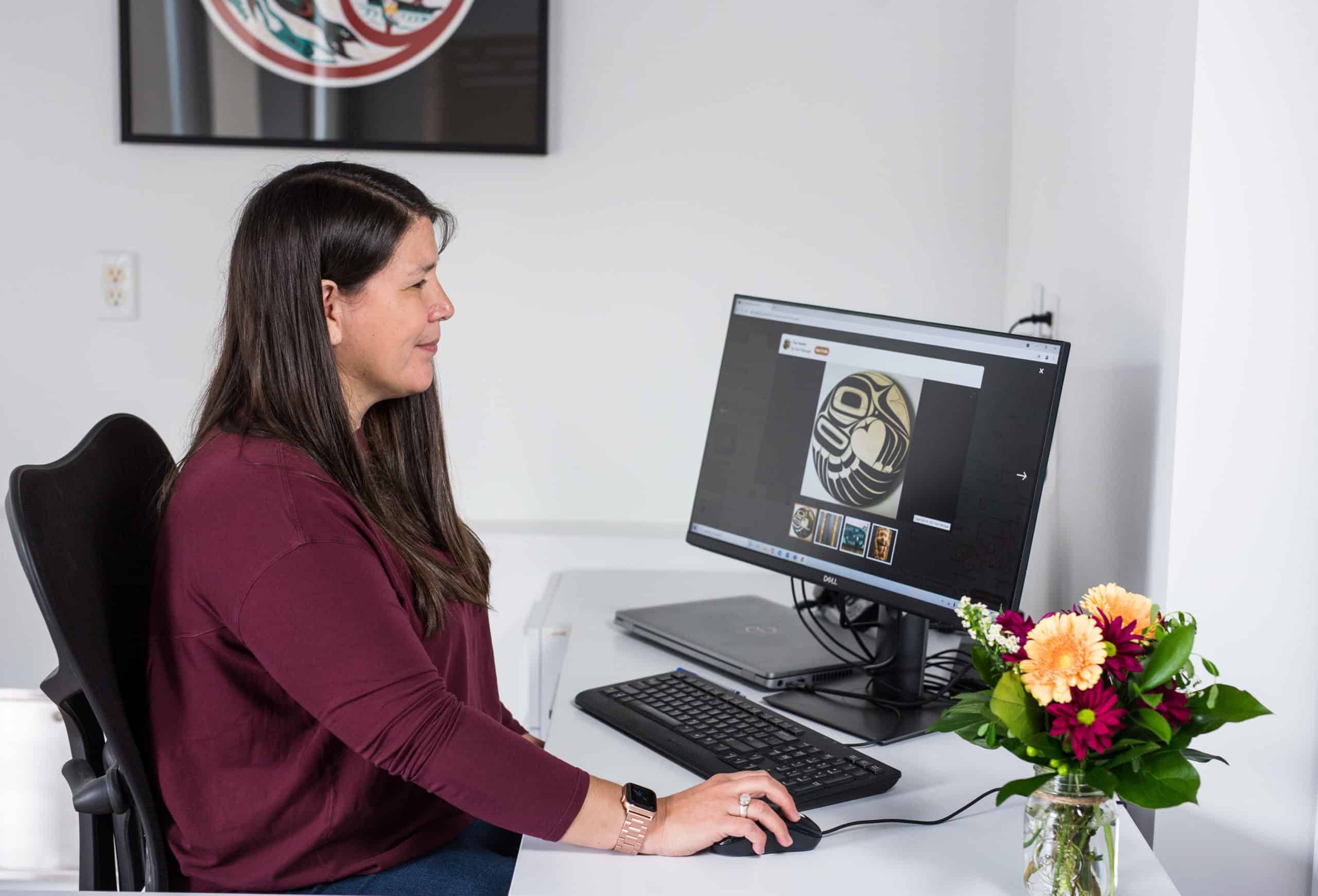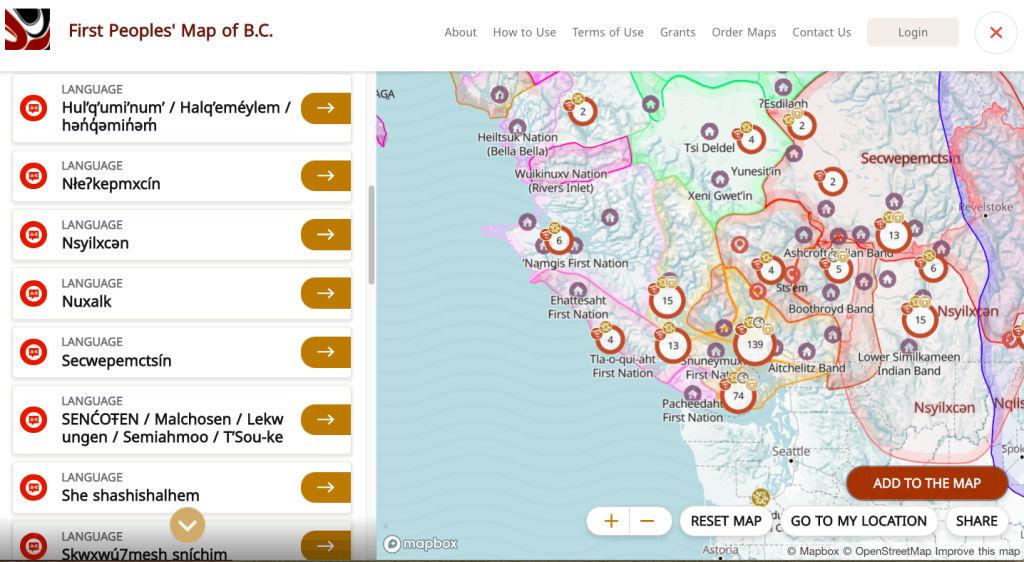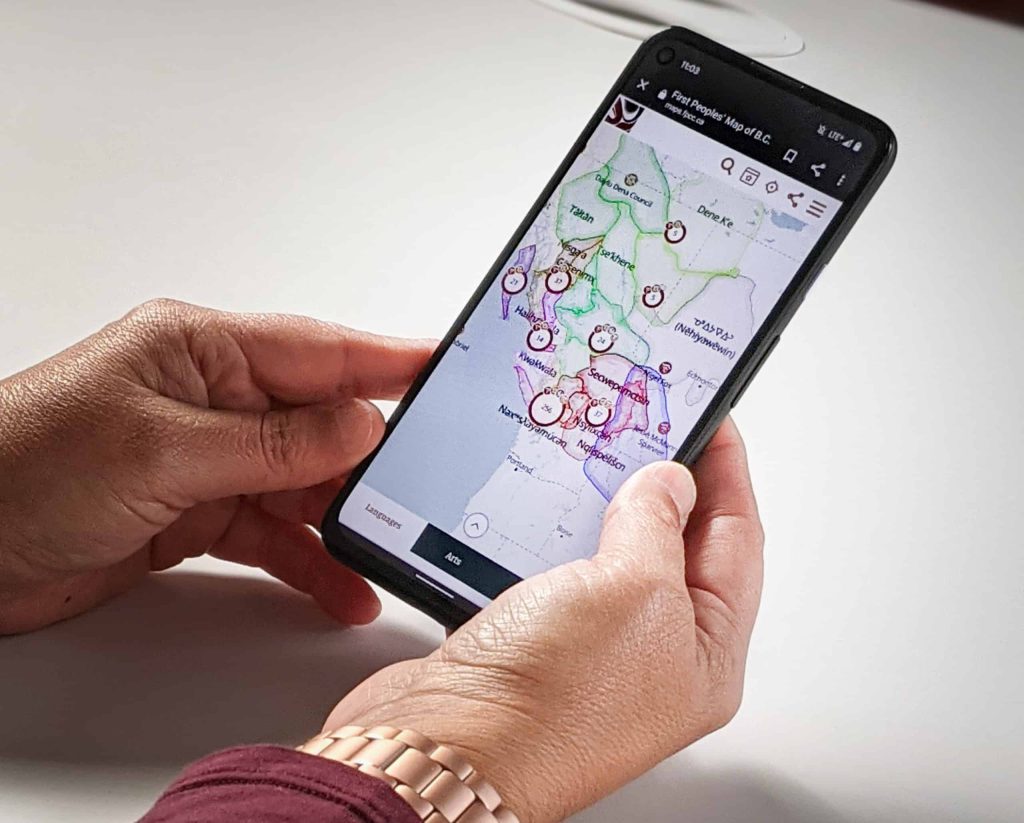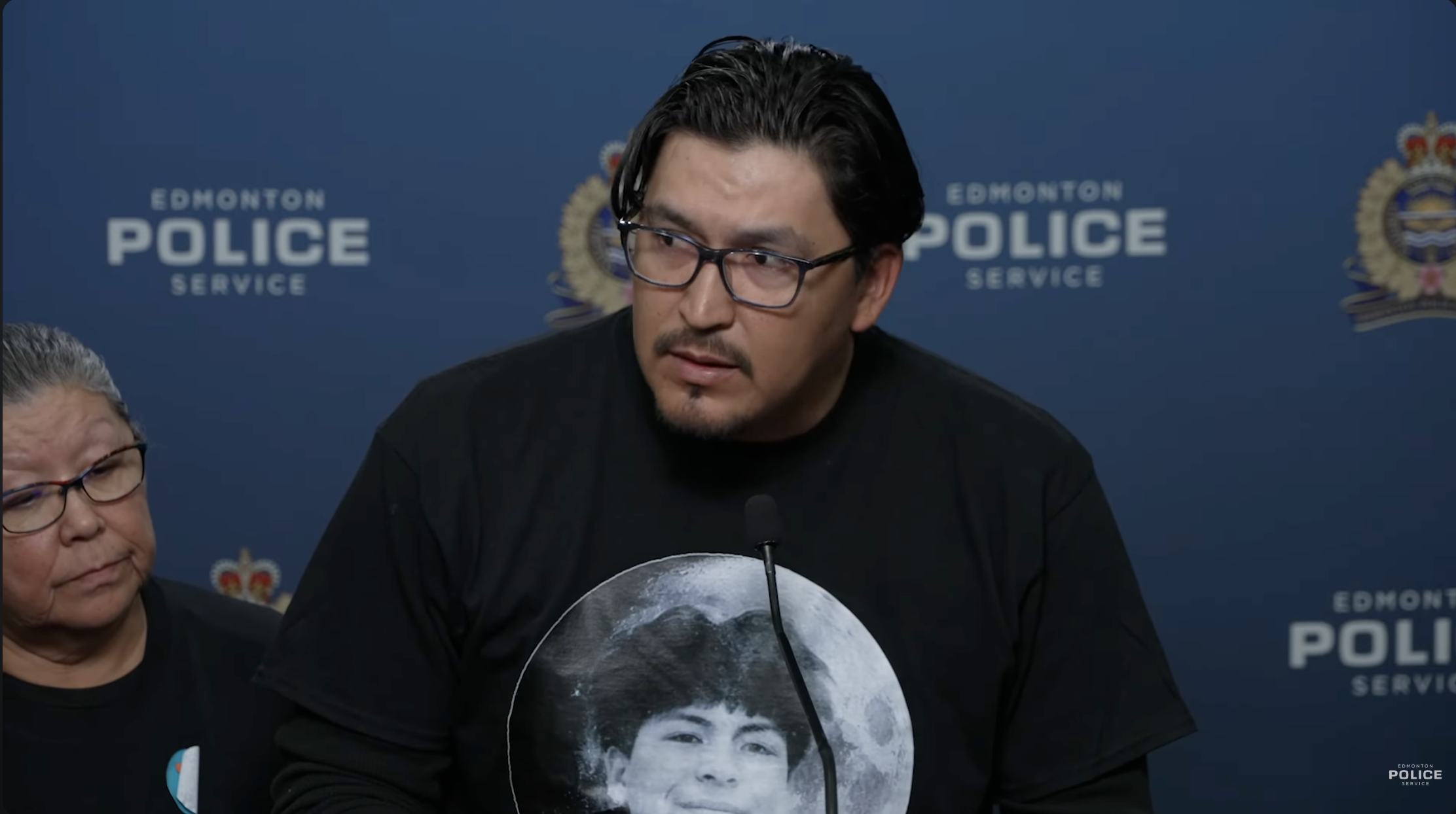New online map braids together Indigenous land, language, arts and culture
‘This is about the people who are doing the work for cultural survival,’ says project leader Cathi Charles Wherry.

A new, interactive map weaves together information on Indigenous peoples’ languages, arts, culture, and connection to place across the lands now referred to as British Columbia.
“We see a lot of stories about our struggles,” says Cathi Charles Wherry, a special advisor for the project, led by the First Peoples’ Cultural Council. “This is about the people who are doing the work for cultural survival.”
The First Peoples’ Map of BC was developed and led by community experts who are working in Indigenous language revitalization and “artistic and cultural survival,” according to an FPCC press release.

Wherry, who was the arts manager of the FPCC for 23 years, says that the idea emerged when the FPCC was putting together a map on Indigenous art in B.C. The new map builds on the council’s previous work, including a language map created in 2008 and an arts map created in 2012. Now, all that information and more is together in one place.
“You should be able to explore this information in a context where it’s intertwined, like it is in real life. It is very unique and reflects more of an Indigenous context,” says Wherry. All the content is contributed and owned by Indigenous people, she adds.
The map includes information on 34 Indigenous languages spoken across B.C., including greetings, place names and pronunciation guides.

“They can see the name of the community. They can hear the name of the community pronounced correctly. They can see what the name of the language is in that area, and even a lot of the language entries have pronunciation.”
The interactive map also includes public art installations, landmarks and cultural centres.
“Our hope is that this map will help non-Indigenous people to better appreciate Indigenous perspectives as one small step towards reconciliation,” says Karen Aird, the acting CEO of the FPCC. “By combining all of this rich information together in one place, the map reflects an Indigenous perspective, by braiding important cultural elements together with the land.”
The FPCC works to assist First Nations in B.C in revitalizing their respective languages, arts and cultures through providing funding, grants, and resources.
Author
Latest Stories
-
‘Bring her home’: How Buffalo Woman was identified as Ashlee Shingoose
The Anishininew mother as been missing since 2022 — now, her family is one step closer to bringing her home as the Province of Manitoba vows to search for her
-
‘He was full of spirit, promise and love’: Police confirm Samuel Bird is presumed dead as search area narrows
Remains of the 14 year old, whose spirit name is Achakapis, are believed to be ‘no more than 150 km’ from ‘Edmonton,’ according to investigators












